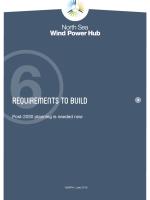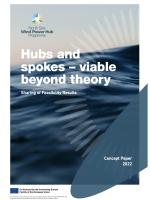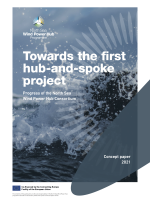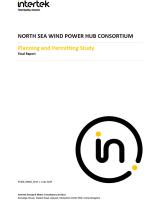Concept paper 6: requirements to build
Post-2030 planning is needed now
Preparing for an internationally coordinated roll-out in a robust stepwise approach requires clarity on spatial development areas for energy infrastructure beyond 2030, regardless of the technical options selected. It is important to get timely directions from policy makers on spatial planning given the significant lead times for these types of infrastructure and further increasing offshore wind energy deployment rates foreseen after 2030.
For a first Hub-and-Spoke project to be operational in the early 2030s, a formal project decision is needed in the early 2020s, implying specific national post 2030 renewable targets (incl. offshore wind) by 2020. This would allow for national onshore and offshore grid planning to be finalised by 2021. This timeline highlights the need for early action to allow for a development and realisation of the project.
The available offshore area in the southern part of the North Sea would allow for a total offshore wind capacity of only 50-90 GW (including the already operational and planned areas up to 2030), depending on the wind farm capacity density. Therefore, an exclusion strategy of offshore areas will likely not allow for a full deployment of any conceivable future energy system. Multi-use of offshore areas and using a long-term perspective must be seriously considered to unlock the cost reduction potential of an internationally coordinated approach, and ensure sufficient area is available.
Multi-use in the North Sea can impact many stakeholders and will have different impacts on the costs of the offshore wind roll-out. A study sought to identify a first order cost impact of multi-use in offshore areas that currently have a specific use such as nature or fishery. The study identified areas which could be added to the offshore wind roll-out based on their total cost level (incl. costs for multi-use) to ensure sufficient offshore wind deployment. Next to environmental and techno-economic studies, the consortium has specifically engaged with NGOs to consider their input on the Hub-and-Spoke concept.
To address the feedback from NGOs the consortium has introduced an additional “investigative location” to its techno-economic analysis of main drivers for the design of a Hub-and-Spoke project. Structured and focused discussions are needed between policy makers, grid operators, market parties and NGOs to define technology specific renewable targets, spatial planning and grid planning for the North Sea countries post 2030.





